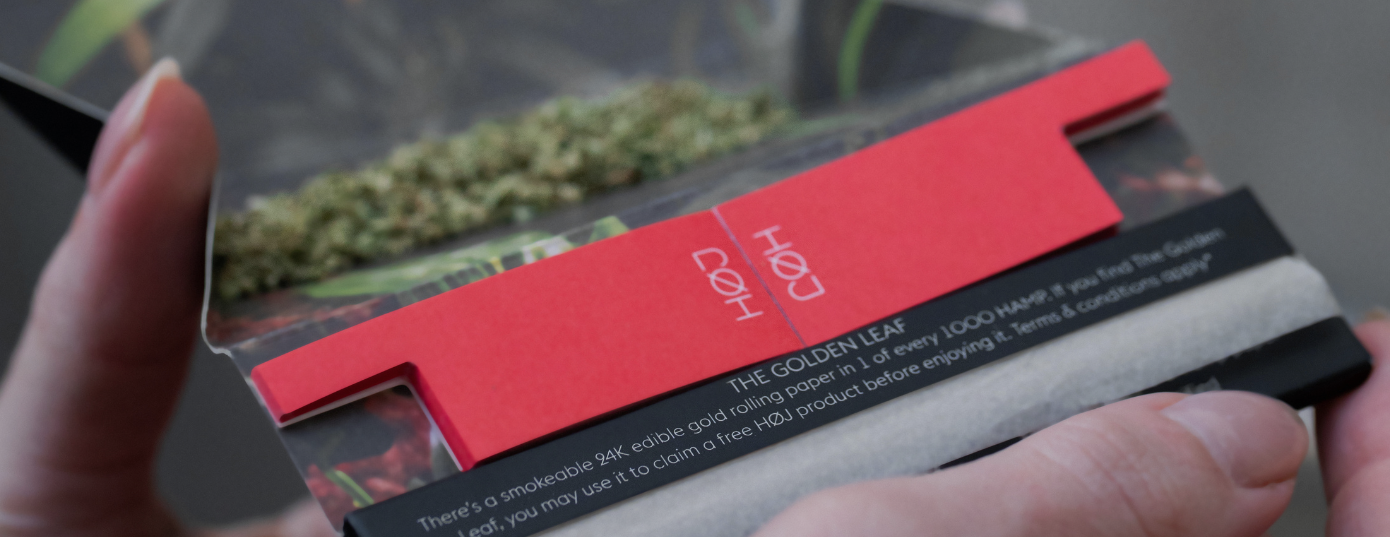When I first dived into the world of cannabis, I naively thought spliff and blunt were just synonyms for joints. But boy, I was very wrong.
Did you know that there’s more than one way to roll up weed? Cannabis opens up so many possibilities when it comes to pairing other things with weed, like food with marijuana, infused cannabis beverages, THC oils, CBD ointments, and even pairings with tobacco.
In this article we’ll learn about the similarities of joints, spliffs and blunts, how they differ from one another and the million dollar question… which option is more healthy.
How are joints, spliffs, and blunts different?
These three rolled up weed cigarette look alike have one thing in common: their filling contains marijuana. Alternatively, two of them are paired and mixed up with tobacco.
Joints, spliffs and blunts can be defined by how much cannabis and tobacco they contain, as well as the material they’re rolled with. While both joints and spliffs are rolled with rolling papers, blunts are rolled with wrapping paper, which is made of tobacco, similar to a cigar.
Leafly provides the following table so we can compare these three at a simple glance.
|
Contains cannabis |
Contains tobacco |
Uses rolling paper |
Uses wrap |
|
|
Joints |
Yes |
No |
Yes |
No |
|
Spliffs |
Yes |
Yes |
Yes |
No |
|
Blunts |
Yes |
Yes |
No |
Yes |
Joints
Joints are quite possibly the most popular way to smoke weed. They’re thin in appearance, wrapped by white rolling paper; they also have a crutch or filter in one end of the cigarette, which prevents finger burns.
Cannabis has been used for a long, long time, but according to Leafly, the first recorded use of a joint was in Mexico, and it had recreational purposes. A pharmacist at the University of Guadalajara studied that back in the 1850s, laborers were already using recreational marijuana. However, it’s believed that the Spainards brought cannabis to America and its indigenous people from Mexico circa the sixteenth century, much earlier than the first recorded use of a joint.
Let’s take a look at the pros and cons of joints, as mentioned by Leafly:
PROS
- Easy to put out and save for later
- Easy to spark up
- Great for sharing
- Small and portable
CONS
- Not very discreet smell; other people will most likely notice you’re smoking weed
- Takes experience to roll a joint properly
..
Spliffs
Spliffs are perhaps the most similar looking to joints, given the fact that they also use rolling paper and a filter. Here’s where they differ: the filling has mixed cannabis with tobacco, and usually people will choose how they ratio both substances to their preference.
It is believed that spliffs originated in the West Indies. According to The Flower Pot, this region used the term to simply refer to a marijuana cigarette. Eventually, this word spread through Europe and the United Kingdom, where they started using the term to refer to what we know today: a cannabis cigarette combined with tobacco.
Here’s a look at the pros and cons of spliffs, also mentioned by Leafly:
PROS
- Easy to put out and save for later
- Easy to spark up
- Great for sharing
- More discreet than a joint; other people will most likely think that you’re smoking tobacco because it will mask the smell of weed
- Tobacco adds a buzzy, energetic feeling
CONS
- Smoking tobacco can be harmful to your health
- Takes experience to roll a spliff properly
- Tobacco can ruin the taste of weed
..
Blunts
Blunts are visually different from joints and spliffs because they’re rolled with a wrap, which has a brown color as it’s made of tobacco. Typically, the filling is cannabis only, but some people like to put a little bit of tobacco inside it to mix it up. In addition, it’s common that people use the wrapping of a cigar by cutting it, emptying it and filling it with the weed of their choice.
According to Healthline, blunts originated in New York as a method for smoking pot discreetly, using the cigar wrapping and then filling it with cannabis. This means that blunts are bigger than your average joints, naturally holding a lot more weed than joints or spliffs. Actually, smoking an entire blunt is roughly the equivalent of smoking six joints, which is why people leave them for special occasions.
Last but not least, let’s review the pros and cons of blunts, brought to us by Leafly:
PROS
- Easy to put out and save for later
- Easy to spark up
- Great for sharing
- Tobacco adds a buzzy, energetic feeling
- Will most likely last longer because of the wrap
CONS
- Smoking tobacco can be harmful to your health
- Takes experience to roll a blunt properly
- Tobacco can ruin the taste of weed
So… Is one option healthier than another?
I’ll just give you the facts and you can be the judge of that.
Healthline mentions that both marijuana and tobacco smoke can damage your lungs in the long run, as well as increase the risk for serious health conditions. Some people think that smoking less weed and adding tobacco instead could be a good solution for a healthier joint, but the truth is that adding tobacco on top of cannabis just means that you’re getting the damaging effects of tobacco too.
PubMed Central has researched tobacco and weed to understand the effects caused by spliffs, and studies have found that smoking both substances together can actually increase risk for addiction and cannabis dependence. Here’s how it works: Since the two appear to balance out the negative symptoms caused by both, they also seem to enhance the enjoyable symptoms like relaxation and getting a different kind of buzz. This makes a person less likely to notice the negative effects, leading them to keep smoking.
Furthermore, studies have shown that cigars and their wrappers are highly toxic. According to Healthline, cancer-causing toxins during the fermentation process of tobacco are a high risk to people who smoke them because cigar wrappers are more porous than rolling papers, meaning that the burning is less complete. This results in smoke that has higher concentrations of toxins and the like.
The American Lung Association has mentioned, time and time again, that all smoke is harmful to lung health. Our bodies were simply not made for inhaling and holding large amounts of unfiltered smoke, so discretion is highly advised.
So there you have it, a big chunk of information that will hopefully make your smoking experience more responsible, always keeping in mind the negative side effects. I believe that, with the correct information, you can make the best decision for your relationship with cannabis, so be smart about your dosing, and check out other smoking methods like vaping or even using a pipe.
Author: Mary Jane
Desiree, S. (2020). Cannabis in History: The Journey of the Joint. Leafly. Retrieved from https://www.leafly.com/news/cannabis-101/cannabis-history-journey-joint
Healthline (2019). Blunts, Spliffs, and Joints: What to Know Before You Roll Up. Retrieved from https://www.healthline.com/health/what-is-a-blunt
The Flower Pot (2020). The Origin of a Spliff. Retrieved from https://theflowerpot.la/blogs/happenings/origin-of-a-spliff
Williams, K. and Goggins, P. (2022). What’s the difference between joints, blunts, and spliffs? Leafly. Retrieved from https://www.leafly.com/learn/consume/smoke/difference-between-joints-blunts-spliffs


0 comments